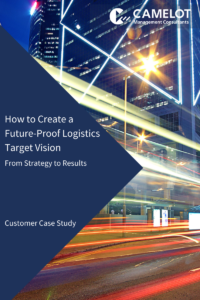Modern logistics, and therefore also warehousing, are increasingly characterized by portfolio diversification and progressive minimization of delivery sizes. While other general conditions, such as staff shortages and competitive pressure, also have an impact on warehouse logistics, the aforementioned trends can lead to rapid inventory expansion and consequently to extreme capital commitment costs. A precise and extensive demand forecast can counteract this increase in cost.
Complexity is user-dependent
A demand forecast can be generated by an analyst based only on historical demand data using a simple system. A typical example of this would be exponential smoothing. With this type of provision, a valid and value-adding forecast can be created, on the basis of which you can reduce your minimum inventory levels and associated costs. Over time, more and more indicators were added, with associated variables, with the aim of being able to anticipate demand data more accurately, or using a different weighting. These indicators arise on one hand from the data itself, and on the other as a result of other external factors. The weather, for example, can also have an impact on consumer behavior. The more influencing factors and indicators that are included, the more complex the demand forecast becomes. Further influencing factors could also be economic embargoes, crises and disasters, strikes etc. The abundance of options for predicting needs can quickly lead to confusion. Furthermore, the aim of creating the best possible forecasting methodology is an almost unattainable task, due all the possible combinations. However, even small improvements in forecasting can reduce costs enormously, or generate profit.
Further forecasting options
Forecasting methods in warehousing have historically focused on the development in demand for goods in the warehouse. However, other aspects of a warehouse can also be made more efficient through anticipation. That’s because the arrival of deliveries can also be predicted with a certain level of probability. Historical delivery deviations can thus be correlated with influencing factors. The reappearance of these influencing factors can now be used as indicators for future delivery deviations. However, non-linear relationships can also have an influence. Identifying these can prove to be significantly more challenging. Internal processes can also be analyzed and a forecast of expected processing times can be generated, depending on the activity-specific general conditions. More detailed plans can be created from this, so as to prepare outgoing transport orders more efficiently and quickly.
The advantages of integrating artificial intelligence
The field of application for artificial intelligence, or more precisely the sub-term for the self-learning algorithm (a.k.a machine learning), has been experiencing a huge upswing in the last 5 years. This is based on the fact that computing power has increased sufficiently to enable complex calculations to be carried out in adequate time periods. In addition, more and more data, which are collected in real time, are available for calculations.
However, the subject is also experiencing a boom in media coverage. A clear milestone is the victory of the Google DeepMind Program, AlphaGo. In 2016, it defeated the world’s best professional player of the game “Go”, a significantly more complex game than chess. This is astonishing as Go, in contrast to chess, offers significantly more options per move and a brute force algorithm (that tries out all moves) cannot be used effectively. However, in other, even more complex computer games, artificial intelligence could be used to beat human professionals.
The field of application for artificial intelligence has already undergone some progress and development and lends itself to use in the fields of prediction. The advantage here is in maintaining an iterative approximation of forecast and reality and mastering increasing complexity.
In addition to this, other influencing factors can also be discovered that were not considered. If correlations are found, however, it has to be possible to interpret results to check whether firstly the correlation found is meaningful or coincidence, and secondly whether the influence is large enough to justify investing in collecting the data.
What should be considered
When dealing with the subject of artificial intelligence, you will often come across the term “Black Box”. This is characterized by having an input and an output, without having to understand what happens in between, how the data is interpreted etc. This is one of the main problems with self-learning algorithms. False relationships can significantly complicate or falsify the interpretation of data. If you do not understand the way data is processed, then you have only limited options to influence it, and to be able to validate or negate the underlying assumptions.
One opportunity for using a self-learning forecasting model would be to define what influence or proportion of the result is due to artificial intelligence. Traditional forecasting methods can continue to be used to maintain the intuition and experience of the human analyst. This can then be enriched with forecasting through artificial intelligence, so as to obtain a more balanced mixed forecast.
Conclusion
The use of artificial intelligence offers the opportunity to enrich forecasts in the field of warehouse logistics. However, AI should not be relied upon exclusively, because the interpretation of information is only as good as the integrity of the information available, and the human contribution should not be overlooked. Cooperation between man and machine is clearly the key. If you would like to know more, please don’t hesitate to contact us.
We would like to thank Thomas Grill and Albert Peychal-Heiling for their valuable contribution to this article.

